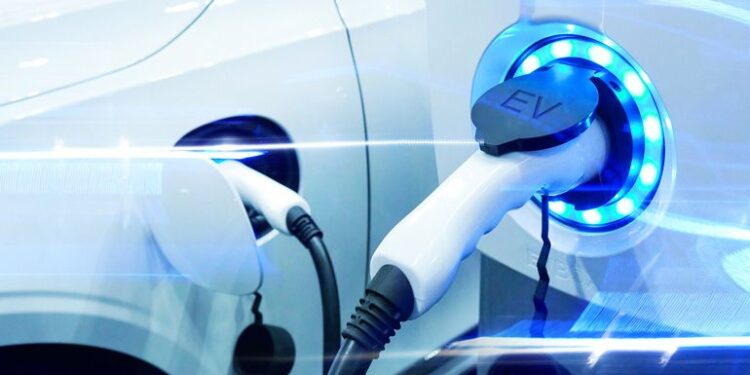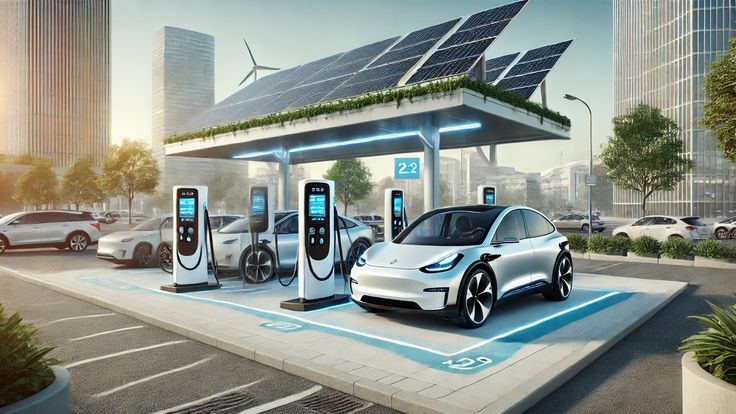The global landscape of transportation is undergoing a monumental shift as electric vehicles (EVs) become more than just a futuristic concept—they are fast becoming a vital component of modern mobility. In response to growing environmental concerns and the urgent need to reduce carbon emissions, countries around the world are investing heavily in electric car infrastructure. This expansive development not only supports the widespread adoption of EVs but also plays a crucial role in shaping a sustainable, energy-efficient future.
This article delves into the various aspects of electric car infrastructure, exploring the technological advancements, government policies, and private sector innovations driving this expansion. We will examine the current state of the industry, the challenges it faces, and the promising future that lies ahead. From advanced charging networks to integrated smart grid systems, the evolution of electric car infrastructure is redefining the way we think about transportation and energy consumption.
The Global Shift to Electric Vehicles
The shift toward electric vehicles has been accelerated by multiple factors that include environmental imperatives, technological breakthroughs, and changing consumer preferences. As traditional internal combustion engine (ICE) vehicles contribute significantly to air pollution and greenhouse gas emissions, both governments and individuals are increasingly turning to EVs as a cleaner alternative.
Electric vehicles offer several notable benefits:
A. Reduced Emissions: EVs produce zero tailpipe emissions, leading to cleaner air and a lower overall carbon footprint.
B. Enhanced Energy Efficiency: Electric drivetrains convert a higher percentage of energy into vehicle movement compared to ICEs.
C. Lower Operating Costs: Despite higher upfront costs, EVs typically offer lower maintenance and fueling expenses over their lifetime.
D. Technological Innovation: The adoption of EVs drives advancements in battery technology, renewable energy integration, and smart infrastructure systems.
This global transition is not merely a trend; it is a transformative movement reshaping transportation and energy sectors, with significant implications for economic growth and environmental sustainability.
Key Components of Electric Car Infrastructure
Building a robust electric car infrastructure requires the integration of several components that work together to support the everyday needs of EV drivers. These components ensure that electric cars are as convenient and reliable as their gasoline-powered counterparts.
A. Charging Stations
Charging stations are the cornerstone of EV infrastructure. They come in various forms, each designed to meet different needs:
- Level 1 Chargers: Typically used for home charging, these chargers use a standard 120V outlet and are ideal for overnight charging.
- Level 2 Chargers: Offering faster charging than Level 1, these are common in public and workplace settings, using a 240V supply.
- DC Fast Chargers: Capable of charging an EV to 80% in as little as 30 minutes, these stations are essential for highway stops and long-distance travel.
- Ultra-Fast Chargers: The newest generation, ultra-fast chargers are being deployed in select locations to provide even quicker charging times, reducing range anxiety significantly.
B. Grid Integration and Smart Charging
For the electric car infrastructure to function efficiently, integration with the power grid is essential. Smart charging systems not only manage the energy flow but also optimize the timing of charging sessions to reduce strain on the grid. Features of smart charging include:
- Time-of-Use Pricing: Encouraging EV owners to charge during off-peak hours.
- Load Balancing: Ensuring the grid remains stable by distributing charging demand evenly.
- Renewable Integration: Connecting charging stations with renewable energy sources such as solar or wind power.
C. Battery Technology and Recycling
The performance and sustainability of electric vehicles largely depend on battery technology. Innovations in battery design have led to:
- Increased Energy Density: Allowing for longer driving ranges.
- Faster Charging Capabilities: Reducing downtime and enhancing convenience.
- Enhanced Durability: Extending battery lifespan and reducing replacement frequency.
- Recycling Programs: Initiatives to recycle and repurpose used batteries, minimizing environmental impact and conserving valuable resources.
D. Digital Platforms and Mobile Applications
A seamless user experience is critical for the success of EV infrastructure. Digital platforms and mobile applications enable drivers to:
- Locate Charging Stations: Real-time mapping services help find the nearest available charger.
- Monitor Charging Status: Apps provide updates on charging progress and estimated completion times.
- Make Payments: Integrated payment systems simplify the process of paying for charging sessions.
- Plan Routes: Navigation tools that factor in charging station locations to plan long-distance journeys.
Government and Private Sector Involvement
The rapid expansion of electric car infrastructure is fueled by coordinated efforts between governments, private companies, and international organizations. These stakeholders play different yet complementary roles in fostering an environment conducive to EV adoption.
A. Government Policies and Incentives
Governments worldwide are implementing policies that support the growth of electric mobility. Key initiatives include:
- Subsidies and Tax Rebates: Financial incentives to lower the cost of EV purchases and charging equipment.
- Regulatory Mandates: Emission standards and mandates that encourage the phasing out of traditional ICE vehicles.
- Infrastructure Grants: Funding for the installation of public charging stations and the development of smart grid technologies.
- Research and Development Support: Investment in R&D for advanced battery technologies and renewable energy integration.
These policies not only reduce the barriers to EV adoption but also signal a commitment to sustainable transportation.
B. Private Sector Investments and Innovation
Private companies are also at the forefront of developing electric car infrastructure. Automotive manufacturers, technology firms, and energy companies are investing in research, development, and deployment of innovative solutions. Their contributions include:
- Strategic Partnerships: Collaborations between car manufacturers and charging network operators to expand infrastructure rapidly.
- Technological Breakthroughs: Advancements in battery storage, wireless charging, and user-friendly digital platforms.
- Market Expansion: Investment in international markets to create a global network of charging stations.
- Sustainability Initiatives: Efforts to ensure that the production and operation of charging infrastructure adhere to environmentally sustainable practices.
C. International Cooperation and Standards
The development of a cohesive electric car infrastructure benefits greatly from international cooperation. Organizations and alliances work together to:
- Establish Global Standards: Harmonizing technical specifications to ensure interoperability across different regions.
- Share Best Practices: Facilitating knowledge exchange and lessons learned from successful infrastructure projects.
- Coordinate Investments: Joint initiatives that pool resources and expertise to accelerate infrastructure deployment.
Regional Developments in EV Infrastructure
The expansion of electric car infrastructure is a global phenomenon, with significant progress occurring in various regions. Understanding the regional nuances can shed light on the challenges and opportunities unique to each area.
A. North America
North America has seen rapid growth in EV infrastructure, particularly in the United States and Canada. Key highlights include:
- Government Incentives: Federal and state-level policies support EV purchases and infrastructure development.
- Private Sector Leadership: Major companies are establishing extensive networks of fast and ultra-fast charging stations.
- Urban Focus: Cities are integrating EV infrastructure with smart transportation systems to reduce congestion and pollution.
B. Europe
Europe is at the forefront of the electric vehicle revolution. The region is characterized by:
- Strong Regulatory Frameworks: Stringent emissions targets and incentives drive the shift to EVs.
- Dense Charging Networks: High population density and robust public transportation systems enable widespread deployment of charging stations.
- Innovative Projects: Pilot programs in smart cities integrating renewable energy and advanced grid management.
C. Asia-Pacific
The Asia-Pacific region, led by countries like China, Japan, and South Korea, has made significant strides in EV infrastructure:
- Massive Investments: Governments and private investors are dedicating substantial resources to build extensive charging networks.
- Technological Prowess: The region is known for rapid technological adoption and innovation, particularly in battery technology and smart grids.
- High Market Penetration: Rapid urbanization and government mandates have resulted in a swift increase in EV adoption rates.
D. Other Regions
While North America, Europe, and Asia-Pacific are leading the charge, other regions are also making progress:
- Latin America: Emerging markets are beginning to adopt EV infrastructure, supported by international partnerships and environmental initiatives.
- Africa: Although still in early stages, several African nations are exploring EV technology to address urban mobility challenges and reduce reliance on fossil fuels.
- Middle East: Wealthy nations are investing in sustainable infrastructure as part of broader economic diversification plans.
Challenges and Barriers
Despite the impressive growth of electric car infrastructure, several challenges must be addressed to ensure its long-term success and sustainability.
A. Technical and Operational Challenges
The development and maintenance of EV infrastructure involve complex technical considerations:
A. Grid Capacity: Ensuring the power grid can handle increased demand from charging stations without compromising stability.
B. Interoperability: Standardizing charging protocols and connector types to ensure compatibility across different manufacturers and regions.
C. Reliability: Maintaining consistent and reliable service, particularly in remote or high-demand areas.
B. Economic and Financial Barriers
The cost of deploying and maintaining a widespread charging network can be substantial. Key financial challenges include:
A. High Initial Investment: The upfront capital required for establishing charging infrastructure, including hardware, installation, and grid upgrades.
B. Return on Investment: Ensuring that investments are economically viable given the current pace of EV adoption.
C. Maintenance Costs: Ongoing expenses related to system upkeep, software updates, and operational support.
C. Consumer Adoption and Behavioral Factors
Encouraging consumers to transition from traditional vehicles to EVs is another significant challenge:
A. Range Anxiety: Concerns over the limited range of electric vehicles and the availability of charging stations.
B. Charging Time: Perceptions that charging an EV takes significantly longer than refueling a gasoline car.
C. Cost Concerns: The higher initial cost of EVs compared to conventional vehicles, despite long-term savings.
D. Regulatory and Policy Issues
Policy inconsistencies and regulatory hurdles can impede the rapid expansion of EV infrastructure:
A. Fragmented Regulations: Variations in local, regional, and national standards may lead to disjointed infrastructure development.
B. Incentive Uncertainty: Changes in government policies or delays in subsidy programs can affect market confidence.
C. Environmental Regulations: Balancing the need for rapid infrastructure development with environmental conservation requirements.
Future Trends and Technological Advancements
Looking forward, the future of electric car infrastructure is filled with exciting possibilities and innovative breakthroughs that promise to address current challenges and further accelerate EV adoption.
A. Wireless Charging Technologies
Wireless charging is emerging as a revolutionary technology that could eliminate the need for physical cables. By embedding charging pads in roads and parking spaces, vehicles could charge automatically, offering unprecedented convenience and efficiency.
B. Solar-Powered Charging Stations
The integration of solar panels with charging stations is another promising development. Solar-powered stations not only reduce dependency on the grid but also promote the use of renewable energy, aligning with global sustainability goals.
C. Advanced Battery Technologies
Continuous improvements in battery technology will play a critical role in expanding EV infrastructure. Innovations such as solid-state batteries, improved energy density, and faster charging capabilities are set to revolutionize the industry, making electric vehicles more accessible and reliable.
D. Integration with Smart Grids
The integration of EV charging networks with smart grid technology will enhance grid resilience and efficiency. Smart grids can balance energy loads, incorporate renewable sources seamlessly, and provide real-time data for both operators and consumers.
E. Autonomous Charging and Maintenance
Future charging stations might feature autonomous systems that manage charging, maintenance, and even minor repairs without human intervention. These smart systems will further reduce operational costs and improve service reliability.
Economic and Environmental Impact
The expansion of electric car infrastructure is not only a technological revolution but also an economic and environmental game-changer.
A. Economic Growth and Job Creation
The development of EV infrastructure stimulates economic activity in several ways:
A. Job Opportunities: The construction, installation, and maintenance of charging stations create new jobs in engineering, IT, and support services.
B. Local Economic Boost: Enhanced infrastructure can attract businesses and promote investments in local communities.
C. Innovation Ecosystems: Increased R&D in battery technologies and smart grids fosters innovation and drives long-term economic growth.
B. Environmental Benefits
The environmental advantages of a robust EV infrastructure are immense:
A. Reduced Air Pollution: Electric vehicles produce no tailpipe emissions, contributing to cleaner urban air and better public health.
B. Lower Greenhouse Gas Emissions: The shift to renewable-powered charging stations helps lower overall carbon emissions, mitigating climate change.
C. Sustainable Urban Development: Cities that adopt EV-friendly policies often experience reduced traffic congestion and a better quality of life for residents.
C. Social Impact
Beyond economic and environmental factors, the growth of electric car infrastructure also brings positive social outcomes:
A. Enhanced Mobility: Improved access to charging facilities promotes greater mobility for all, including rural and underserved communities.
B. Improved Public Health: Cleaner air and quieter urban environments contribute to better overall health and well-being.
Case Studies and Success Stories
Examining real-world examples of successful electric car infrastructure projects provides insight into best practices and the potential for future expansion.
A. Scandinavian Initiatives
Countries in Scandinavia have become pioneers in EV infrastructure. Their success can be attributed to:
A. Strong Government Support: Robust subsidies, tax breaks, and clear regulatory frameworks. B. Integrated Urban Planning: Charging stations are seamlessly incorporated into city planning, ensuring accessibility for urban and suburban residents. C. High Consumer Adoption: A cultural shift toward environmental responsibility has resulted in rapid EV adoption rates.
B. North American Expansion
North America has seen significant strides in developing EV infrastructure, driven by both public and private efforts:
A. Corporate Investment: Major automotive and energy companies are building extensive charging networks across highways and urban centers. B. Innovative Partnerships: Collaborations between local governments and tech companies have resulted in smart charging solutions that cater to the needs of modern commuters. C. Research Hubs: Universities and research institutions are spearheading advancements in battery technology and smart grid integration, further propelling the region forward.
C. Asian Market Growth
In Asia, particularly in China, Japan, and South Korea, government initiatives and rapid technological innovation have accelerated EV infrastructure development:
A. Massive Scale: Large-scale investments have led to the establishment of dense networks of fast and ultra-fast charging stations. B. Technological Integration: Cutting-edge technology such as AI and IoT is being integrated into charging stations, optimizing energy distribution and maintenance. C. Urban Transformation: Major cities are adopting electric mobility as a key component of their smart city strategies, reducing pollution and enhancing quality of life.
Future Outlook
The expansion of electric car infrastructure worldwide is poised to continue its upward trajectory as technological innovations, government policies, and market dynamics align in favor of electric mobility. The future holds several exciting prospects:
A. Global Standardization: As international standards for charging protocols and connector types become universally accepted, interoperability will improve, further boosting consumer confidence.
B. Expansion into Emerging Markets: Developing regions will increasingly adopt EV infrastructure as part of broader sustainable development initiatives, leading to a more inclusive global market.
C. Enhanced Consumer Experience: Ongoing improvements in digital platforms, wireless charging, and real-time grid management will provide a seamless, user-friendly experience that rivals traditional refueling methods.
Conclusion
Electric car infrastructure is rapidly evolving and expanding across the globe, driven by the urgent need for cleaner, more sustainable transportation solutions. As governments, private companies, and international organizations work together to overcome challenges and innovate new technologies, the vision of a world powered by electric mobility is fast becoming a reality.
From state-of-the-art charging stations and smart grid integration to breakthrough advancements in battery technology and renewable energy, every facet of this revolution contributes to a cleaner, more efficient future. The economic, environmental, and social benefits of a robust EV infrastructure are profound, promising not only to transform the automotive industry but also to redefine urban living and global energy consumption.
In this era of rapid transformation, embracing electric car infrastructure is no longer a choice—it is a necessity for ensuring sustainable progress and securing a better future for generations to come.









